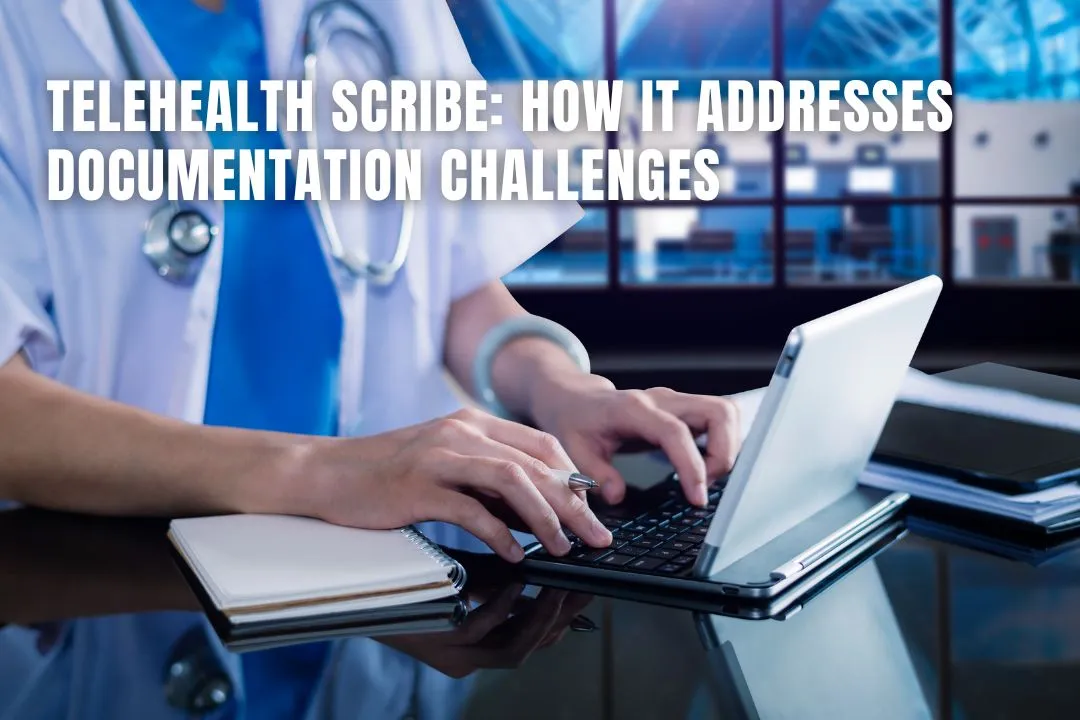
In the rapidly evolving field of healthcare, practitioners are consistently seeking methods to improve patient care while efficiently managing administrative tasks. One of the most significant challenges that healthcare professionals face is managing documentation—ensuring that every patient interaction is recorded accurately and comprehensively. With the advent of digital solutions, the telehealth scribe has emerged as a powerful tool to address these documentation challenges, revolutionising the way medical professionals approach their daily activities.
Documentation in healthcare is a double-edged sword. On one side, it ensures continuity of care, accurate billing, and legal compliance. On the other, it can be a time-consuming process that detracts from the patient interaction experience. Studies highlight that physicians spend approximately two hours on administrative tasks for every hour of direct patient care. This imbalance often leads to burnout, reduced job satisfaction, and, ultimately, diminished quality of care. With the increasing demand for healthcare services and a shortage of physicians, effectively managing documentation has become a critical issue that demands urgent attention.
A virtual medical scribe is a professional who assists healthcare providers by documenting patient encounters in real-time from a remote location. Unlike traditional in-clinic scribes, the virtual scribe uses secure technology platforms to listen to and transcribe doctor-patient interactions, inputting the necessary information directly into the Electronic Health Record (EHR) system. This service provides a comprehensive recording without the physical presence in the exam room, ensuring privacy and maintaining the focus on the patient.
A virtual medical scribe is a data entry specialist who collaborates remotely with healthcare practitioners to capture patient information during medical appointments. This solution allows doctors to focus on patient care while the scribe manages their documentation in real-time. The scribe uses advanced technology, such as video conferencing and electronic health records (EHR), to facilitate seamless communication with the physician and document all relevant information accurately.
The adoption of virtual medical scribe solutions has led to significant improvements in addressing documentation challenges. Here are some key ways in which this solution is making a positive impact:
The benefits of virtual medical scribe solutions are not limited to addressing documentation challenges. This innovative solution has a far-reaching impact on the healthcare industry and its stakeholders:
Traditional documentation processes often involve redundant paperwork, manual data entry, and fragmented record management. With a virtual medical scribe solution, these inefficiencies are addressed through streamlined digital processes. Automated scribing helps to standardise documentation procedures, reduce the risk of lost or incomplete records, and enhance the overall operational efficiency of healthcare facilities.
Adopting a virtual medical scribe solution seamlessly integrates with existing Electronic Health Record systems. Advanced scribe services are designed to be highly adaptable, ensuring that they complement and enhance current workflows rather than disrupt them. This interoperability is crucial for maintaining continuity and ensuring data flows smoothly across platforms without compromising privacy or security.
Understandably, moving towards a virtual model raises concerns about data security and patient confidentiality. Reputable virtual scribe services utilise robust security protocols, including data encryption and secure server connections, to protect sensitive information. Compliance with healthcare regulations, such as HIPAA in the United States, ensures that patient data is handled with the utmost care and confidentiality.
Numerous healthcare institutions have reported significant improvements after incorporating a virtual medical scribe solution into their practice. For example, a nationwide study of outpatient clinics showed a 27% increase in patient interaction time and a 32% reduction in after-hours documentation work. These tangible benefits reinforce the potential positive impact that virtual scribe solutions can have on healthcare practice.
The virtual medical scribe solution represents a forward-thinking approach to overcoming documentation challenges in the healthcare sector. By integrating state-of-the-art technology with traditional medical practices, it enhances the productivity, accuracy, and satisfaction of healthcare providers while ensuring an unparalleled level of patient care. Solutions like Portiva exemplify this innovative shift, streamlining workflows and allowing providers to focus more on their patients. As the industry continues to embrace digital transformation, such solutions will undoubtedly play a pivotal role in shaping the future of healthcare, driving improvements in efficiency and the overall patient experience.